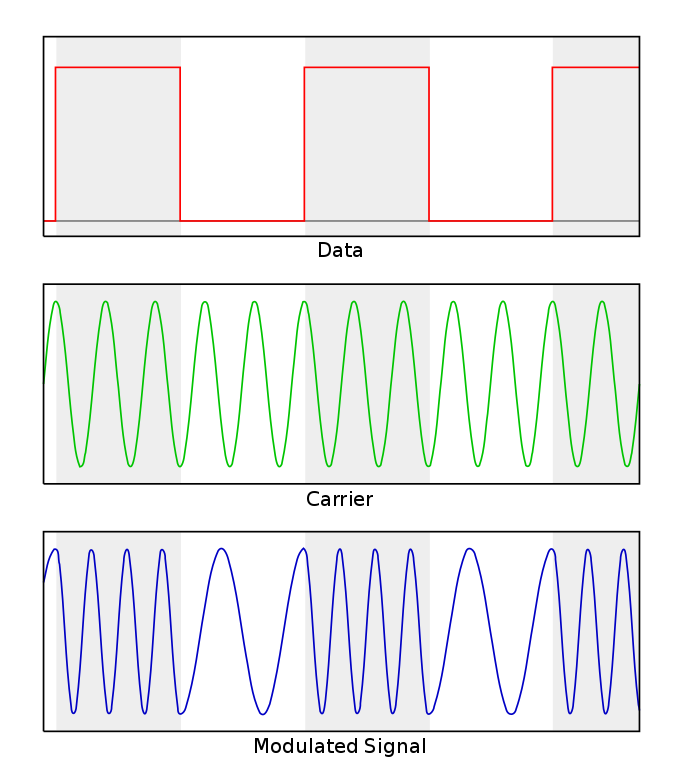Want your very own dial-up modem to play around with? We picked out one that you can easily modify yourself and created a second kit for modem hacking! A phone line is recommended but not required. Click here to order!
What's in a modem?
A modem is anything that performs both MOdulation and DEModulation. This is the process of taking information and altering a wave in such a way that it "carries" the information. One of the simplest and most familiar examples of this is AM radio. Whenever you tune into a radio station, you set your radio to receive a signal that's at a specific carrier frequency. Your radio then interprets the strength of that signal as the information that's being sent (such as the sound from an AM radio talk show) and drives its speakers accordingly.
 Image author: Ivan Akira CC BY-SA 3.0
Image author: Ivan Akira CC BY-SA 3.0
Methods of modulation
AM, or Amplitude Modulation, is just one example of a modulation scheme that encodes analog information. Many modulation schemes for both analog and digital data exist, though we'll be focusing on digital modulation. A digital equivalent to AM is Amplitude-Shift Keying, where a 1 would have a larger amplitude and a 0 would have a smaller amplitude. Two other simple techniques for digital modulation are Frequency-Shift Keying (FSK) and Phase-Shift Keying (PSK).
 Image author: Ktims CC BY-SA 3.0
Image author: Ktims CC BY-SA 3.0
In FSK, a carrier wave is frequency-shifted up or down depending on whether the bit to be sent is a 1 or a 0. As an example, if your carrier wave is 1000Hz, a 1 could be 1050Hz and a 0 could be 950Hz.

In PSK, the phase of a carrier wave is changed depending on the value of a bit (or multiple bits). As an example, a 0 bit would be the unaltered carrier wave, but a 1 would be the carrier wave phase-shifted by 180 degrees.
Many other techniques for digital modulation exist, but many use a combination of the simple schemes explained here.
NEXT CHAPTER





 Click here to watch Nyan Sat live!
Click here to watch Nyan Sat live!